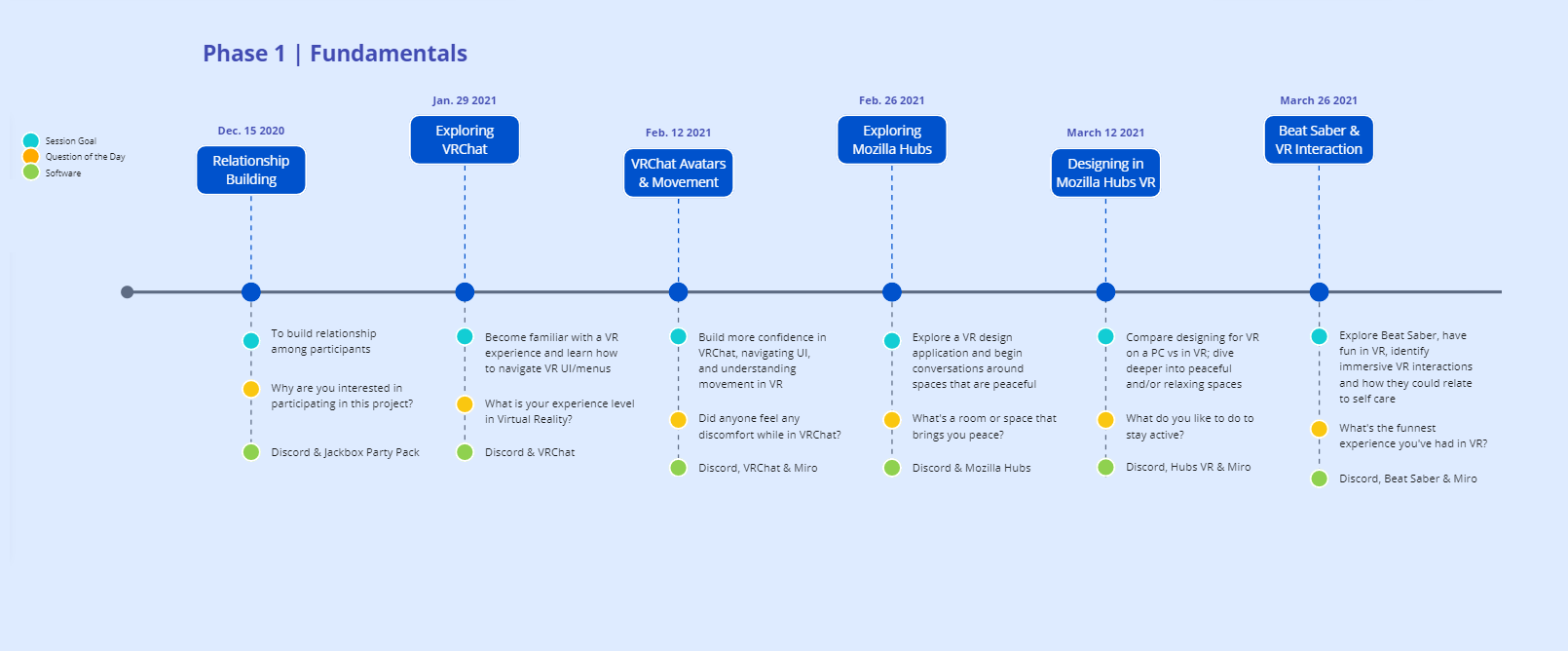The Co-Design Sessions
The fundamental construct of co-design centers on sharing power among all participants. It emphasizes that youth and adults design together instead of adults designing for youth.
Co-design sessions must be intentionally planned with careful consideration of the goals of the session, the scaffolding required to move from relationship building to talking about mental health and well-being, to beginning to design VR (or other) experiences, to iterating on what’s built by VR developers/designers. The plan will give you the structure for each co-design session and should at the same time provide flexibility and responsiveness if changes need to be made.
Planning for co-design sessions may include teens. Bringing in one or two of the teens who are engaged in the initiative will give teens the chance to learn more about how projects like this work and have a voice in how activities take shape. Keep in mind that for each co-design session participating library staff, teens, and colleagues need to:
- Plan for the session, including setting goals, planning and thinking through activities, assigning roles, deciding what materials need to be designed and created, and setting time frames for each part of the session. (See appendices for a sample)
- Host the session using the materials and session plan created during the planning.
- Debrief the session to specifically discuss what went well and what didn’t go well, as well as why and how the events of the co-design session inform what happens next. Use the field notes template in the appendices to help gather ideas to discuss in session debriefs.
Each session should include an open-ended Question of the Day (QotD) allowing organic conversation to take place without adult interference and empowering teens to use chat, voice, emojis, and so on to share their lived experiences and own ideas honestly and without constraints.
Facilitators of co-design sessions need to consider the skills required to be successful in this work. Co-design facilitators should be able to:
- Engage in open honest conversation with teens
- Be willing to take a learner instead of expert role
- Share power with co-facilitators and teens
- Admit mistakes and failures and learn from those
- Enjoy a process that can be filled with ambiguity and does not come out of a box
When considering elements of good facilitation, also keep in mind the importance of keeping teens engaged throughout a multiple session process. One way to achieve that is through a variety of activities that lead to achieving the ultimate goal. For example, in the activities outlined below different VR experiences and tools are used in each session: VR Chat, Mozilla Hubs, Beat Saber, etc. Teen co-designers therefore are engaged in the process and have exposure and experience with a variety of tools that will help in the ongoing design process.
Below is a guide to the first phase of co-design sessions which focus on intentionally building relationships with teens and engaging them in using and understanding VR technologies along with starting to think about how to use VR in support of teen well-being. Keep in mind that since every group of teens and every community is different, the plan designed by each library may differ.

